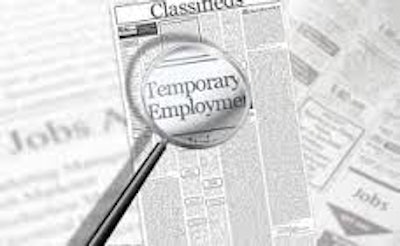
With the construction industry in the midst of its heaviest hiring season, there’s probably a lot on your mind. One thing that may not be? How these new hires could potentially affect your Affordable Care Act (ACA) compliance when next year’s reporting season rolls around.
In industries with variable hours, high turnover, and fluctuating seasons, it’s especially important to keep track of employee data and your company’s ACA responsibilities—even if the current climate on health care is pointing toward a repeal and replace effort. It may not be a priority now, but it should be if you want to ensure you escape fines from the IRS in 2018.
Here’s what you need to know about seasonal employees and health care compliance in this uncertain time.
Seasonal booms can change your ACA status
Construction is one of the many trades with variable work hours, days, and seasons. With so much unpredictability, it’s important to understand the difference between full-time, part-time, and seasonal workers—the only three classes that workers can fall into under the ACA. Full-time and part-time workers are determined by the number of hours an employee works per week, with 30 hours acting as the cutoff between the two. For seasonal workers, however, it’s a little more complicated.
Seasonal workers must fall inside the guidelines set by the IRS in order to qualify: They work 120 days or less during what would be considered a “seasonal,” often recurring, period. These employees differ from others in one important way: their effect on your applicable large employer (ALE) status.
Typically, if you have 50 or more full-time equivalent employees in the preceding year, you are considered an ALE, and should be providing health care coverage for those employees that are considered ACA full-time. However, if you only break that 50-employee cusp for 120 days of the year or less, and removing your seasonal employees drops you back below the 50-employee mark, then you are no longer an ALE—and therefore no longer need to offer health care to your full-time employees.
To put it briefly, seasonal employees can make or break your ALE status. Make sure you know to take them out of your count when determining if you need to follow ACA compliance rules.
Data collection: The key to success
Despite the exception that seasonal employees present when it comes to your ALE status, it’s important that you classify them as variable hour or full-time upon hire. If classified as variable-hour, they must be tracked like all other non-full-time employees. This way, you can make sure that a seasonal employee is truly non-full-time or full-time under the ACA (the latter of which would qualify them for health insurance).
Tracking employee hours can be time consuming and error-prone without the right tools. In the construction industry, it’s entirely possible that schedules change or are swapped at a moment’s notice, making it particularly important that tracking hours is not an afterthought. Using proper payroll technology and intelligent solutions to track and consolidate information on the number of hours worked can help ensure your auditability at a later date.
Failing to track seasonal employees’ hours could have serious penalties in the long run. If you’re audited, you need reliable, verifiable information to prove that those employees actually fell into the category of “seasonal” and escape penalties or fines.
Health care confusion looms—but don’t get sidetracked
It’s easy to assume seasonal employees can be ignored in your tracking, because they may not count toward your ALE status if you are on the 50-employee cusp. It’s also easy to ignore health care requirements altogether, because Republican lawmakers are working to turn a repeal and replace effort into law. But despite the temptation to kick back and hope new legislation will do away with reporting altogether, it’s much safer to carefully keep track of your employees’ work statuses.
The health care bill that recently passed in the House didn’t even mention getting rid of reporting requirements—meaning they (and the associated penalties) would still be in play even if this legislation makes it all the way to the President’s desk. And even if the bill were to change drastically before getting there, it’s likely that reporting requirements—in their current form or a new one—would still exist to ensure government subsidies were being properly handled.
Overall, tracking your employees’ hours of work—particularly those with variable hours, or those that don’t work a full year—is the best way to avoid penalties and fines going forward. Make sure to leverage the proper technology and keep a sharp eye on your employee benefits data—particularly for seasonal employees—in order to stay on top of your health care compliance during the busy construction season.
About the author Arthur Tacchino is Principal and the Chief Innovation Officer at SyncStream Solutions (www.sync-stream.com), a reporting and compliance company.


















